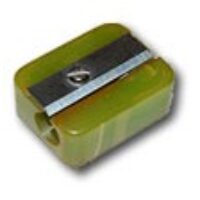We needed a standing lamp for the living room, and went shopping. We started with some of the larger lighting stores around town, and found a great many lamps, mostly imported from China. Like most manufactured goods today they were inexpensive and looked like they would do the job – for a while. The workmanship was usually shoddy and of course there was nobody to tell that I prefer the on/off switch to be just at this height, and I need a longer electric cord, and would love it if the lampshade were just a bit wider…
After a while we were beginning to consider compromising, but decided to first try Karl Marx. This is a small old style shop in downtown Jerusalem; it has been there forever, and I never entered it, though it did attract my occasional amused glance because of the coincidence of its founder’s name.

The shop occupied a tiny room crammed so tight with lamps and lampshades that one could barely stand in it (the photo doesn’t begin to convey this). And there we found a lamp we liked, which we could get with any shade we wished, because they’re made to order by the owners; in fact, we were guided courteously through all the possibilities and ordered one decorated to our specification with a frieze in a color and style to match our living room rug. And of course they promised to construct it with the switch where I wanted it, the cord the needed length, and so forth. The quality and workmanship, too, were perfect.
This is one of those old fashioned Mom and Pop businesses that represent the skill and dedication of a lifetime (or more), and produce goods handmade to a standard no longer seen in the mass-produced disposable products that flood the large chains. I should be sad discussing it, because these wonderful shops are fast disappearing; but I’m too delighted in the excellent lamp Messrs. Marx made for us!




 A piece of thoughtful design on the Renault Clio:
A piece of thoughtful design on the Renault Clio:
 So here’s one person that solved this problem in an original way, providing their ad with a unique chance to register on people’s eyeballs.
So here’s one person that solved this problem in an original way, providing their ad with a unique chance to register on people’s eyeballs.
 I needed hard copy of a paragraph from a long text document, so I opened it in my trusty old editor (
I needed hard copy of a paragraph from a long text document, so I opened it in my trusty old editor ( As someone who spent a large chunk of lifetime working on improving knowledge worker effectiveness, especially around computer mediated communication and collaboration, I can barely contain my excitement. I’ve just sat through the lengthy video of yesterday’s unveiling of Google Wave in the I/O developer conference. Not only have the good folks at Google integrated the most central processes of Computer Supported Collaborative Work – Email, IM, Shared document editing, Discussion boards, and more – into a single tool; but they’ve upgraded their underlying paradigms – which had changed very little in decades – into a dynamic, vibrant usage model that takes advantage of the latest Web 2.0 concepts (and then some).
As someone who spent a large chunk of lifetime working on improving knowledge worker effectiveness, especially around computer mediated communication and collaboration, I can barely contain my excitement. I’ve just sat through the lengthy video of yesterday’s unveiling of Google Wave in the I/O developer conference. Not only have the good folks at Google integrated the most central processes of Computer Supported Collaborative Work – Email, IM, Shared document editing, Discussion boards, and more – into a single tool; but they’ve upgraded their underlying paradigms – which had changed very little in decades – into a dynamic, vibrant usage model that takes advantage of the latest Web 2.0 concepts (and then some). But to the subject of this blog: there was a lecture by Yossi Eliav about The evolution of engineering literacy as seen in Venetian manuscripts about shipbuilding from the 15th century. This mouthful was actually very interesting; but at some point I asked a question about older ships and I was treated to the following insight: these Venetians had large rowing ships (right), galleys, carrying over 100 rowers, which were produced in large numbers and used extensively for centuries; so did the Romans, Carthaginians and Greeks 20 centuries earlier. But the Roman and Greek galleys – triremes, with 3 rows of rowers – were of a completely different, and far superior, construction!
But to the subject of this blog: there was a lecture by Yossi Eliav about The evolution of engineering literacy as seen in Venetian manuscripts about shipbuilding from the 15th century. This mouthful was actually very interesting; but at some point I asked a question about older ships and I was treated to the following insight: these Venetians had large rowing ships (right), galleys, carrying over 100 rowers, which were produced in large numbers and used extensively for centuries; so did the Romans, Carthaginians and Greeks 20 centuries earlier. But the Roman and Greek galleys – triremes, with 3 rows of rowers – were of a completely different, and far superior, construction!